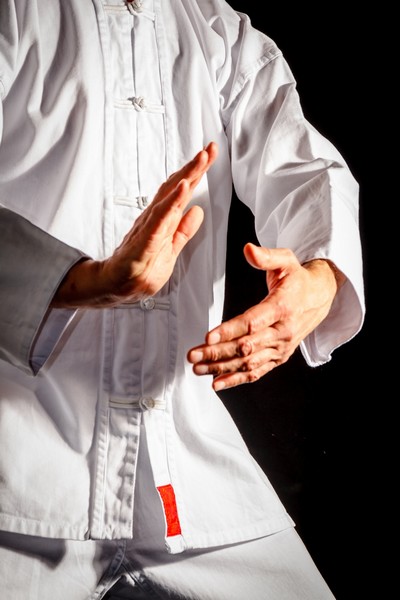Qi Gong for Fibromyalgia
Qi Gong for Fibromyalgia symptoms. Qi Gong also known as Qigong or Chi Kung is a traditional Chinese practice. Similar to Tai Chi, it is often recommended for individuals with Fibromyalgia due to its potential benefits for managing the many symptoms of the condition.
Qi Gong is an ancient Chinese practice that combines gentle movements, breath control, meditation, and mental focus to cultivate and balance the body's vital energy, known as Qi or Chi. The term "Qigong" translates to "cultivating energy" or "working with life energy."
The origins of Qigong can be traced back thousands of years in China, where it has been integrated into Traditional Chinese Medicine and various martial arts practices. Qigong is based on the principles of Yin and Yang, the Five Elements, and the meridian system used in acupuncture.
Here are some reasons why Qi Gong is so beneficial for people with Fibromyalgia:
Qi Gong for Fibromyalgia Involes Gentle Movements and Low Impact

Qi Gong exercises typically involve slow, gentle movements, making it suitable for individuals with limited physical endurance or those who experience pain during more strenuous activities. The low-impact nature of Qi Gong minimizes stress on the joints, muscles, and tissues, allowing individuals with Fibromyalgia to engage in exercise without exacerbating their symptoms.
Qi Gong for Fibromyalgia Promotes Relaxation and Stress Reduction
Fibromyalgia is often associated with increased stress levels, which can worsen pain and other symptoms. Qi Gong incorporates deep breathing techniques, meditation, and mindfulness, promoting relaxation and stress reduction. By engaging in Qi Gong practice, individuals can learn to calm their minds, improve their emotional well-being, and potentially reduce the impact of stress on their symptoms.
Qi Gong for Fibromyalgia Enhances Body Awareness and Mindfulness
Fibromyalgia often involves heightened sensitivity to sensations and discomfort. Qi Gong emphasizes body awareness, teaching individuals to pay attention to their body's signals and cultivate mindfulness. By becoming more attuned to their bodies, individuals with Fibromyalgia may gain a better understanding of their pain triggers, learn to manage their symptoms more effectively, and develop a sense of control over their condition.
Qi Gong for Fibromyalgia Improves Flexibility, SSrength, and Circulation
Regular practice of Qi Gong exercises can help improve flexibility, strength, and circulation in the body. By gently stretching and moving the body, Qi Gong can alleviate muscle stiffness, increase joint mobility, and enhance blood flow, potentially reducing pain and improving overall physical well-being.
My Experience of Qi Gong for
Fibromyalgia

I became interested in Qigong, a gentle form of movement known for its healing benefits, as an alternative to yoga. I was searching for an exercise that wouldn't exhaust me and could provide some relief. The more I learned about Qigong, the more it seemed like the ideal exercise for managing Fibromyalgia.
Joining a group class for exercise was out of the question for me. It would be too stressful, involving travel and unfamiliar surroundings with lots of people. Living with Fibromyalgia means being in a constant state of stress, and adding more stress would only worsen my symptoms of pain, fatigue, and depression.
So, I began practicing Qigong by watching YouTube videos. I quickly developed a liking for it because of its simplicity. The repetitive movements were easy to follow, requiring no special equipment or clothing, and it could be done in limited space. Unlike yoga, which often involves getting down on the floor and assuming challenging poses, Qigong can be done while standing (or sitting if standing is difficult). It's also easier than Tai Chi since it consists of separate, easy movements rather than a flowing sequence.
One of the aspects I loved about Qigong was how it made me feel. After each session, I experienced a remarkable improvement. I had more energy, less fatigue, reduced pain, and an uplifted mood. The more I practiced Qigong, the better I felt.
I soon realized that Qigong was designed to promote healing and treat the body by engaging all the muscles and facilitating the circulation of blood and lymphatic fluid. It also aimed to ensure the smooth flow of Qi (or Chi), the life energy or life force according to Chinese philosophy. Qi should flow freely throughout the body, like a stream through the energy channels called meridians that connect vital organs.
In Traditional Chinese Medicine, stagnant Qi is attributed to stress and anxiety, which are known to contribute to Fibromyalgia. People with Fibromyalgia constantly experience stress, with their fight-or-flight response constantly on high alert. Therefore, it's apparent that individuals with Fibromyalgia may have blocked or stagnant Qi. In Traditional Chinese Medicine, Qi stagnation leads to an imbalance between Yin and Yang, two opposing but complementary energy forces that must be balanced for good physical and mental health. An imbalance can result in Yin deficiency, Yang deficiency, or both.
Both Yin deficiency and Yang deficiency can cause various physical and mental ailments, including the symptoms commonly associated with Fibromyalgia such as fatigue, muscle aches and pains, insomnia, night sweats, poor sleep, poor digestion, poor memory, cold intolerance, cold extremities, anxiety, depression, and lack of motivation. It is likely that most individuals with Fibromyalgia experience deficiencies in both Yin and Yang.
Qi Gong
for
Fibromyalgia Video
Here is an example of one of the videos I found helpful when starting my Qi Gong practice.
Qi Gong
for
Fibromyalgia Studies
While there is limited scientific research specifically investigating the effects of Qigong on Fibromyalgia, some studies have explored the potential benefits of mind-body practices, including Qigong, for Fibromyalgia symptoms. It's important to note that more research is needed to establish a definitive understanding of Qigong's effectiveness for Fibromyalgia. Here are a few studies that provide insights into this area:
1. A 2010 study published in the journal Pain Medicine examined the effects of Qigong on Fibromyalgia symptoms. The researchers found that a 10-week Qigong intervention resulted in significant improvements in pain, sleep quality, physical function, and overall well-being among participants with Fibromyalgia.
2. Another study published in the Journal of Alternative and Complementary Medicine in 2013 investigated the effects of a mind-body intervention, which included Qigong, on Fibromyalgia symptoms. The results showed significant reductions in pain, fatigue, and sleep disturbances, as well as improvements in physical function and overall quality of life.
3. A systematic review and meta-analysis published in 2015 in the journal Medicine reviewed the effects of mind-body practices, including Qigong, on Fibromyalgia. The analysis of various studies revealed that mind-body practices were associated with significant reductions in pain, fatigue, and sleep disturbances among individuals with Fibromyalgia.
These studies indicate the potential benefits of mind-body practices, including Qigong, for managing Fibromyalgia symptoms. However, it's worth noting that more well-designed randomized controlled trials with larger sample sizes are needed to provide stronger evidence and to better understand the specific mechanisms underlying the benefits of Qigong for Fibromyalgia.